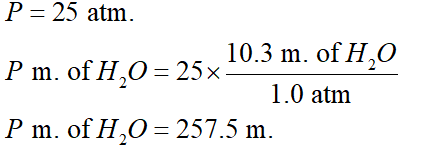Fluid Pressure
The term fluid pressure is coined as, the measurement of the force per unit area of a given surface of a closed container. It is a branch of physics that helps to study the properties of fluid under various conditions of force.
Gauge Pressure
Pressure is the physical force acting per unit area on a body; the applied force is perpendicular to the surface of the object per unit area. The air around us at sea level exerts a pressure (atmospheric pressure) of about 14.7 psi but this doesn’t seem to bother anyone as the bodily fluids are constantly pushing outwards with the same force but if one swims down into the ocean a few feet below the surface one can notice the difference, there is increased pressure on the eardrum, this is due to an increase in hydrostatic pressure.
A negative pressure of 25.0 atm can sometimes be
achieved with the device in Figure before the water
separates. (a) To what height could such a negative gauge
pressure raise water? (b) How much would a steel wire of the
same diameter and length as this capillary stretch if
suspended from above?

Given:
Achieved negative pressure (P) = 25 atm.
Part a)
To calculate the height, convert the negative pressure into the height equivalent to water,

The height = 257.5 m.
Step by step
Solved in 4 steps with 2 images









